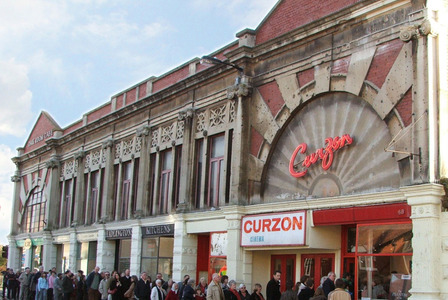
Just in case you don’t know (and you should as we have put on many a few Bristol Silents and Slapstick Screenings there) the Curzon Community Cinema, Clevedon is a real cinematic treasure for the UK! Not only does the cinema house one of the greatest and wide variety of projectors and other cinema memorabilia (very much like the Cinema Museum, London) in the country but the community can also celebrate the fact that it is one (or even thee) oldest running cinema in the country!
Established in 1912, the Curzon has continuously been open for the past 100 years; making 2012 the Centenary year for the cinema. So when you go there to watch the most recent Blockbuster you can sit back and see some of the Curzon’s one hundred year heritage as well. You don’t get that at your local multiplex now do you?!

To celebrate its Centenary year the Curzon Community Cinema has opened its doors once again to show the country the vast collection that the cinema houses; and on top of that tell you the story of how the cinema came to be established in 1912 (people tell us it is some-how connected to the Titanic).
So, next weekend (Saturday 16th & Sunday 17th June) the Curzon will be having one of its ‘Open Days’ when members of the general public can come along and explore not only the modern parts of the wonderful Edwardian cinema but also check out the vast film collection. On top of all this, people will be allowed to see the Curzon’s stunning balcony, a real eye opener.
SNUB POLLARD FILM SCREENINGS
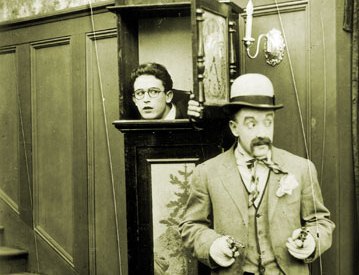
On top of all this, the cinema will also be screening a collection of Snub Pollard films for everyone to enjoy. Pollard (seen here seeking out Harold Lloyd) is probably best remembered today for his film shorts which he made for Hal Roach in the 1920s, although, it should be noted he also made some good (and some bad) soundies later on in his career.
We’ve been told that the following will be screened on both days (so you won’t be missing out if you go on either the Saturday or Sunday).
Snub Pollard films as follows:
LOOKING FOR TROUBLE (1917)
THE BIG IDEA (1917)
SNUB THE FERRYBOAT MAN (1922)
SNUB THE SKATING ACE (1923)
SNUB THE OIL MAGNET (1923)
IT’S A GIFT (1923)
Time wise, the screenings will start at 12:00 and finish about 13:30.
The Curzon Memories App
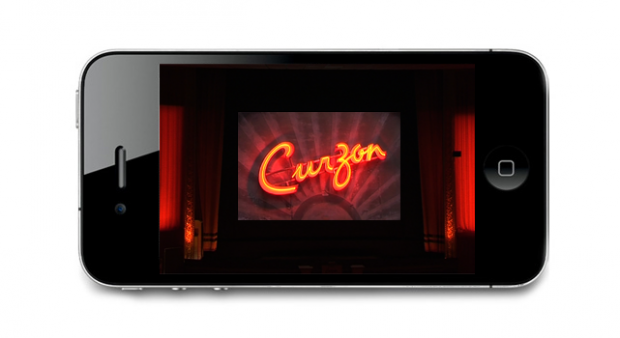
And then on top of all this great stuff it’s really worth having a look at the Curzon App. For all you techno bods out there, the app is gives you the chance to guide yourself through the world of the Curzon over the course of the last 100 years a real treat worth trying out while you are there as well. Some of us have already tried it and it’s really worth doing.
Thankfully, Charlotte Crofts (Digital Cultures Research Centre & UWE) is now able to step in and explain a little bit more about this great new piece of software. For now, we shall pass you over to her and we hope to see some of you over the course of the weekend.
Charlotte Crofts writes…
The Curzon Memories Project is based at the Curzon Community Cinema in Clevedon which, as well as being a fully operational cinema with a state-of-the art digital projector, also houses the Curzon Collection of Cinema Heritage Technology – part of which is on display throughout the cinema building, the main collection being accessible to the public throughout the year. The project, which was funded by the University of the West of England and the Digital Cultures Research Centre, aimed to explore how new media could be used to enhance visitors’ understanding of the cinema’s heritage.
There are two main outcomes of the project, the Curzon Memories App – which was launched on Apple and Android in March 2012 – and the Projection Hero installation – a miniature cinema which you can manipulate with your smartphone.
The Curzon Memories App is a mobile phone application which enables visitors to find out more about the cinema’s history by exploring the interior and exterior of the building, triggering memories via QR Codes and GPS respectively. These are a mixture of dramatisations, historical interpretation and oral histories recorded in collaboration with Education Officer, Cathy Poole, as part of the Heritage Lottery Funded Curzon Memories Project.
Along the way we encounter the voices of Victor Cox and his stepmother, Blanche Cox the family who built the cinema. Victor and his father James Newton Cox were originally stonemasons who initially projected pictures in the town hall. They built the first cinema in 1912, and it was so successful that they built a larger one right on top of it in 1921/2, without missing a single screening according to programmes published in The Clevedon Mercury. Victor was a young lad when his father married the then Blanche Harwood, who had been an operatic diva gracing the stages of Europe.
In the app we hear these two characters’ reactions to the cinema as it is now. Victor represents the hard-nosed businessman whose main concern is “bums on seats”, whilst Blanche represents the magic of cinema: “Look at them with their shopping bags, we should have built a supermarket the amount they spend in a week”, remarks Victor in relation to the Lidl and Morrisons stores that have sprung up behind the cinema; “No, no, no, darling, the magic of the moving pictures, Clevedon needed a cinema,” retorts Blanche, dismissively.
One of the dilemmas in the development of the app was getting the balance right between memory and dramatization – in the feedback on the first iteration the dramatizations went down really well, but in the second evaluation there were problems with the way in which the dramatizations were presented for some users. They felt confused about whether they were hearing oral testimony or fiction. In the final iteration – which is due to be tested in February – I’ve addressed this by more explicitly introducing the characters as historical figures, and re voicing them with professional actors.
Ian Lavender plays Victor Cox, who was described as the “meanest man in Clevedon, he was tighter than the wallpaper on the wall” by George Dimond, a button boy who worked in the cinema in the 1930s. Yet Cox is also known to have been a great benefactor to Clevedon and paid for two charabancs to drive all the builders of the 1922 cinema to a picnic to Cheddar Gorge. One of George’s roles was to plug in the hearing aid for the deaf patrons, so I imagine Victor Cox, on over hearing George’s memory of him, barking at him “Dimond! You stupid boy, go and wire Mr Calderwell up for sound” – I couldn’t resist the reference to Ian’s role as “stupid boy” Pike in Dad’s Army. Indeed, Ian plays Cox as a mixture of the officious Captain Mainwaring and Pike, living in the shadow of his over-protective stepmother, played by Anna Farthing, who’s interpretation of Blanche Cox was informed by the RP accent of Marguerite Patten.
You are guided through the app by Mrs Green, based on a real usherette who worked in the cinema and was referred to as “Torchy” Green by one contributor, Susan Sikora, because of the way she used to flash her torch to discourage patrons from snogging in the back row. Mrs Green is voiced by Jacqui Bressington, who works as a duty manager at the Curzon, following the lead of Calvium’s Escape From the Tower app in which they used the image of a real life Beefeater within the app, although he was voiced with an actor. Jo Reid, Creative Director of Calivum (the company who make AppFurnace the app development tool used in the project) mentions how using a person associated with the venue can bring a great deal of pleasure and surprise to the visitor when they encounter them in person. The hope is that the same frisson will occur should users bump in to Jacqui at the Curzon. Unlike Escape From the Tower, however, I decided to use Jacqui’s real voice, rather than that of an actor, as I felt that it gave more authenticity to the app.
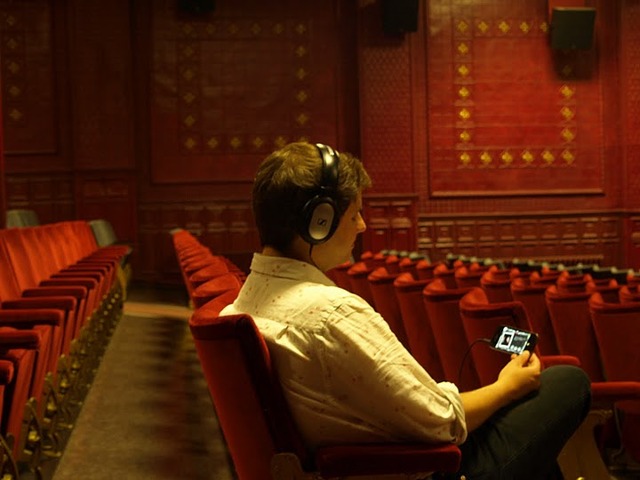
QR codes are used to trigger memories inside the building. A number of technologies were considered, including motion and pressure sensors and RFID codes, but QR codes were selected due to their user-friendliness, minimal infrastructure and low cost. In the evaluation of the second iteration QR codes were received positively in terms of their ease of use and the level of user-satisfaction of knowing that context-specific media had been activated by scanning the QR code (in contrast to the uncertainties of GPS). Users commented on their sense not only of space, but also of time whilst listening to memories in the places in which they actually happened: “That was the thing that grabbed me most as I sat down actually looking at the stage as that ‘Rock Around the Clock’ was playing. And I thought, ‘Wow!’ I just got this feel for the beginning of the English rock & roll scene in these small cinemas.” One of the last QR codes to be added to the app was one about the Christie organ which was renovated and installed in time for the cinema’s centenary in April 2012. The cinema never had such a grand organ, but the films were accompanied by a small church organ located in one of the boxes in the balcony and Blanche Cox would occasionally perform in the interval.
Memories are triggered by GPS as you explore the outside of the building. However, given the vacillations and inaccuracy of the GPS signal in the region, after testing several iterations an additional “No GPS” interface was designed to enable the user to explore manually should the GPS signal be too weak. The character of the Usherette was also introduced to better orient the user in relation to where they should be standing and what they should be looking at. The iterative design process (which is endorsed by Jo Reid) enables rapid prototyping and ability to respond to real-time testing in the field. Indeed, it is important to emphasise that this is a location-based project and the memories are most resonant when experienced on-site in the actual locations where they originally occurred, like the Muriel Williams’ recollection of being in the cinema on the night that a bomb went off immediately outside the front door in 1941. Listening to this memory whilst standing beneath the shrapnel pitted entrance can be quite moving.
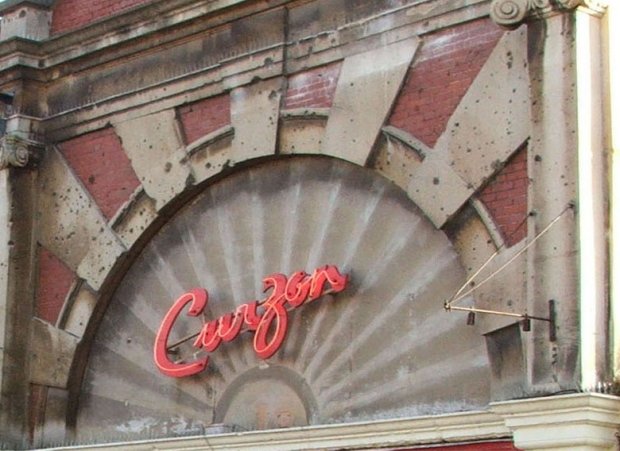
The Projection Hero installation is designed work as part of the Curzon Memories App – it’s just one of the QR codes you encounter as you explore the building – but it also operates as a stand-alone exhibit that can be activated by any smartphone using a QR Reader. Once you scan the QR code on the little cinema screen, an interface pops up on your phone which allows you to operate the cinema, open the curtains, dim the lights and start the movie, which you watch through the tiny projection booth windows. The programme starts with the iconic ‘Asteroid’ theme tune from Pearl and Dean, followed by films about the dying art of cinema projection, including interviews with Maurice Thorton, Curator of the Curzon Collection and author of The Everlasting Picture House, a book about the cinema. The project is programmed by Tarim from Media Playgrounds, using Arduino circuits connected to the internet to control the cinema. The hand-carved seats and frame were made by Simon Dorgan at Urbi et Orbi and the curtains fashioned by yours truly.
Maurice recalls being trained by the chief at the Granada at Kettering, who himself started back in 1916 at the Stoll Theatre in London, “he said ‘look, you’re the most important person you are, there’s hundreds of people that have made this film,’ he said, ‘but you’re the icing on the cake because you are going to show it to an audience, so you’re an artist and you’ve got to behave like as if you’re on the stage, instead of being on the stage you’re in the projection room, but you are showing, you are giving a performance’ and I’ve never forgotten that. That’s the difference between showing a film and pressing a button.” In contrast we then hear Pete Stamp talking about how the Curzon’s new digital projector will eventually make his job obsolete because it can be programmed to dim the lights remotely. By asking the user to “perform” as the Projection Hero, stepping outside of the auditorium, the installation seeks to enhance their understanding of the highly important, but invisible role of projectionist, which is coming under threat in the digital age. The irony being that I’m using new media to get the point across.
The use of mobile technologies in a heritage context is becoming increasingly prevalent. There are a growing number of heritage apps and digital humanities is a focal point for much UK research funding, as evidenced by the Arts and Humanities Research Council’s Digital Transformations strand and the 2012 AHRC Creative Economy / UWE REACT Hub, Heritage Sandbox theme (www.react-hub.org.uk).
The very nature of locative media seems to afford an ideal platform through which to enhance visitors’ experiences of physical heritage sites. However, there is always the danger of mobile technologies detracting from the experience of actually “being there”. The key findings of the Curzon Memories Project are the importance of an iterative design process, user evaluation and sensitivity to context in the development of compelling locative heritage experiences.
For more information about the Curzon Memories App and the official website where you can download the app on both iPhone and Android.
Charlotte Crofts is a member of the Digital Cultures Research Centre and is Senior Lecturer in Film Studies and Video Production at University of the West of England. Her current project is mapping the lost cinemas in Bristol as part of the City Strata project funded by the AHRC REAT Hub ‘Heritage Sandbox’
Twitter: @charlottecrofts @cinemapping
